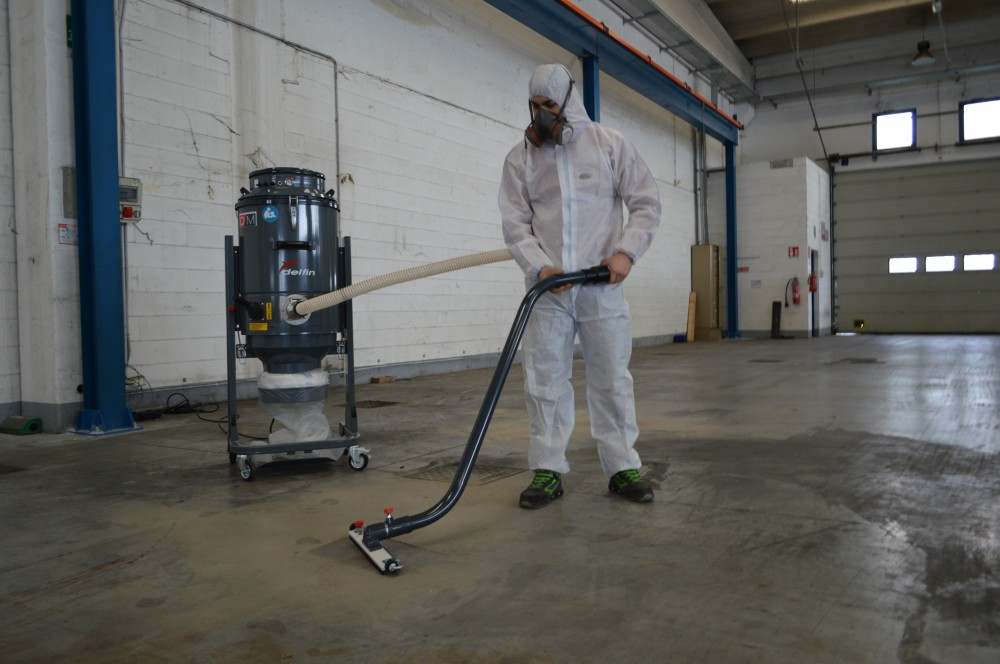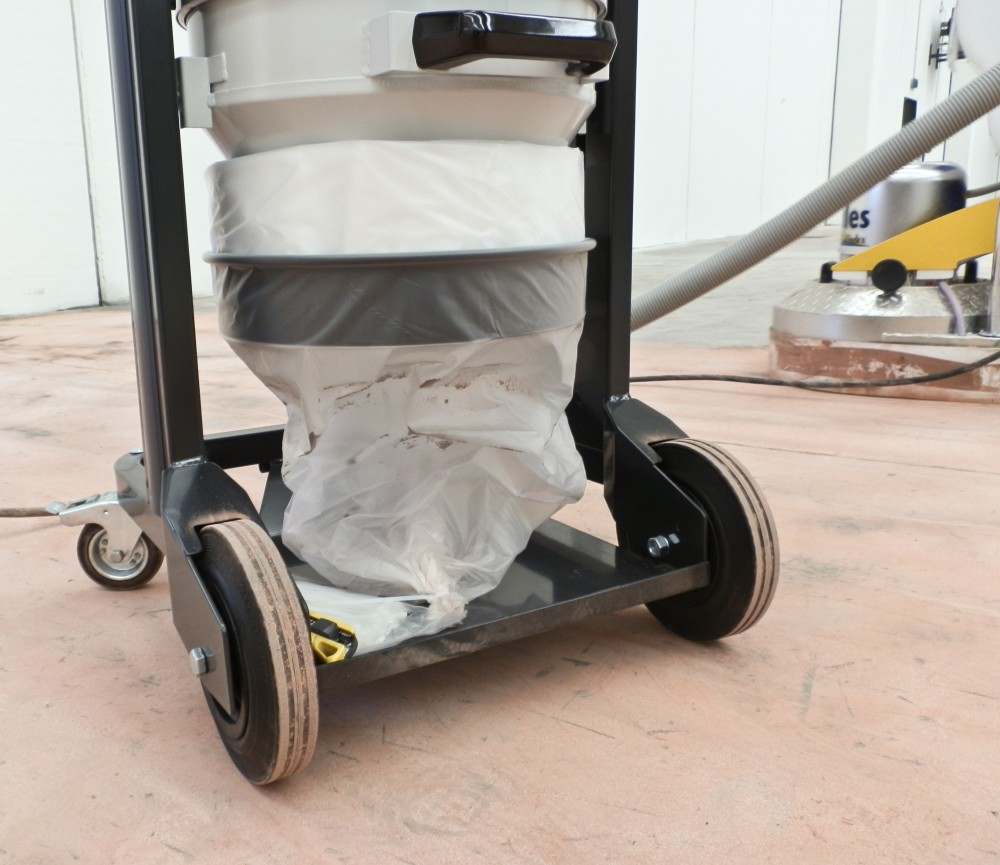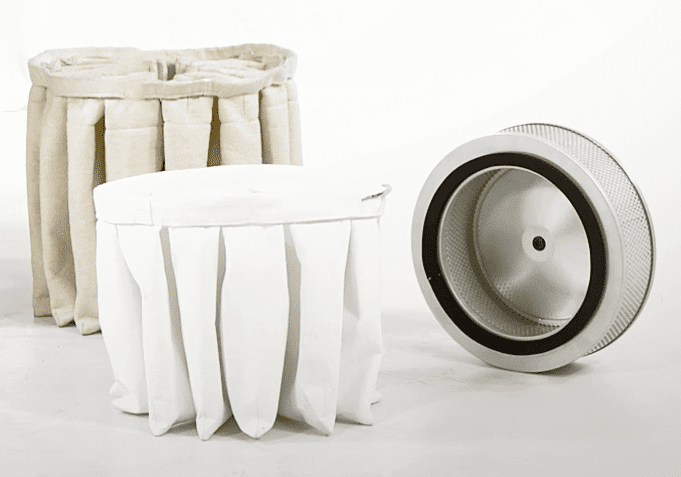Crystalline silica dust: risks and prevention
04/12/2019

At the end of 2017, the European directive 2017/2398 was issued. By entering into force, this directive amended directive 2004/37 / EC on the protection of workers against the risks arising from exposure to carcinogenic substances.
The directive includes silica among hazardous dusts and defines:

To do so, it is necessary to provide:
M and H filtration categories
To protect workers, DELFIN provides the most suitable filter to each vacuum cleaner, according to the level of danger of the dust to be vacuumed, in compliance with the IEC / EN60335 standard.
Power, comfort in the disposal of harmful material and ease of transport are the strengths of these vacuum cleaners, specifically conceived for suctioning fine dust.
The Endless Bag is a bagging system (20 meters
long continuous bag) which allows to adjust weight and length of the bag according to one’s need, completely preventing contact between the fine powder and the operator.
The operator using the Endless Bag system is free to choose the weight and length of the bag, by means of clamps.
The directive includes silica among hazardous dusts and defines:
- A limit value for respirable silica dust.
- The inclusion of health surveillance for workers exposed to silica dust.
- The duty for employers to take measures to contain or totally avoid exposure of their workers to silica.
What is silica dust?
Crystalline silica dust, commonly called SLC, is a type of dust contained in many minerals such as rocks, sand, clays and gravel. All these elements together make up the 75% of Earth's crust. Silica causes biological damage and puts health and safety of those coming into contact with it at risk.What are the risks?
Silica dust inhalation can cause serious illness. The largest silica particles are retained by the nose and expelled by coughing, while the thin ones can penetrate the pulmonary alveoli and cause damage. Crystalline silica affects the airways causing diseases such as silicosis, bronchopneumopathy or lung cancer. This is why a limit value has been established for respirable crystalline silica dust.Which are the activities posing a threat to workers’ health?
Most of activities entailing contact with bricks, mortars, paints, cement, ceramics, slate, sands, concrete are those which normally generate dust and so those most at risk, specifically:- Users of hand tools in the building sector (sanders, cutters, etc.);
- Foundry workers (silica sand is used for molds in which molten metal is poured);
- Production of glass (silica sand is one of the raw materials used);
- Cement plants (present in the mixture used for the production of clinker, a basic component for the production of cement);
- Construction sector;
- Production of bricks;
- Pharmaceutical sector (for example for the production of dental pastes);
- Textile sector (in denim fabric sandblasting operations).

How to prevent the danger?
Any worker exposed to toxic dust must be enabled to work safely. Personal protective equipment (PPE, such as filtering masks), is the usual recommended protection system.The best solution, however, is to prevent the dispersion of silica dust in the air.To do so, it is necessary to provide:
- Ventilation for working areas.
- Pressurized water to remove dust
- Industrial vacuum cleaners to be used with toxic dust sources.
Industrial vacuum cleaners to be used with crystalline silica dust
The localized suctioning of dust by means of an industrial vacuum cleaner avoids the diffusion of fine particles by extracting them directly from the source. The industrial vacuum cleaner can be integrated directly into the machinery used for processing. The use of vacuum cleaners for fine and toxic dust significantly reduces the concentration of crystalline silica dust in the air, ensuring the safety of workers.Delfin Solutions
M and H filtration categories
To protect workers, DELFIN provides the most suitable filter to each vacuum cleaner, according to the level of danger of the dust to be vacuumed, in compliance with the IEC / EN60335 standard.
- M Filter: For medium risk powders, filtration up to 1 micron. M filtration is the minimum legal requirement for work on a construction site.
- H14 filter: For high-risk powders, filtration up to 0.18 micron and 99.995% efficiency.
Endless Bag safe dust collection systems
Power, comfort in the disposal of harmful material and ease of transport are the strengths of these vacuum cleaners, specifically conceived for suctioning fine dust.
The Endless Bag is a bagging system (20 meters

long continuous bag) which allows to adjust weight and length of the bag according to one’s need, completely preventing contact between the fine powder and the operator.
The operator using the Endless Bag system is free to choose the weight and length of the bag, by means of clamps.
- No contact with the vacuumed dust
- Total safety for the operator
Discover the best solution against toxic dust for your business!




